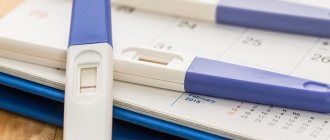The glucose tolerance test, or, as it is often called “sugar load,” is one of the specific examination methods that involves determining the body’s tolerance to glucose (read: sugar). A glucose tolerance test can even reveal a tendency to diabetes mellitus, as well as diabetes mellitus that occurs in a latent form. And, accordingly, it makes it possible to intervene in a timely manner and take all necessary steps to eliminate the threat associated with the disease.
General information
Load blood sugar testing is very popular as it can detect prediabetes and diabetes. The analysis proceeds according to the following algorithm:
- A person's blood is taken on an empty stomach. After this, you need to drink a glass of water with glucose within a few minutes. To make the solution, the doctor dilutes 75 g of glucose in plain water.
- After drinking the dissolved glucose liquid, the person's blood is taken again. A glass of sugar must be drunk quickly. If you have problems with this, you can add lemon to the liquid.
An oral test allows you to understand how the body metabolizes glucose. A fasting sugar level above 5.5 mmol/l is a reason to diagnose gestational diabetes. If a person has a fasting glucose level above 7.5 mmol/L, this is a reason to stop the exercise test. After consuming glucose, sugar should not rise significantly. The analysis is performed in a laboratory setting.
Important! To get an accurate result, you must prepare for the procedure in advance and follow all the doctor’s recommendations. The tolerance test will require approximately 4 hours of free time.
Timing of GTT in pregnant women
Typically, this study is prescribed at 24-28 weeks of pregnancy. It is during this period that diabetes can be detected at an early stage. The specific timing of the appointment will be determined by the doctor who monitors the progress of pregnancy. If no abnormalities are detected during the test, then the woman can consider herself completely healthy.
It is worth noting that the first capillary blood test for glucose can be prescribed at the very beginning of pregnancy, but without a load. Blood is taken from a finger on an empty stomach. If all indicators are normal, then the next time a glucose test with a sugar load is performed. If deviations are detected, an additional list of necessary examinations is prescribed.
A specialized glucose tolerance test is mandatory unless there are contraindications. You can't just give it up like that. Preparation for proper implementation is carried out 72 hours in advance. You will need to drink and eat as usual for 3 days. The main thing is that the amount of carbohydrates consumed is not less than 150 g per day. Eating is prohibited 10 hours before the test. The last meal of the evening should be light.
An oral test is mandatory if a pregnant girl is at risk of developing gestational diabetes. The following factors are identified that require a thorough examination using various tests:
- excess weight;
- chronic diseases;
- late pregnancy.
Your doctor will give you information on how to prepare for the test. In order for the fetus to develop normally, it is necessary to monitor the progress of pregnancy and undergo various examinations.
Features of reducing sugar levels
Symptoms of a lack of glucose in the body can be observed at certain times of the day (morning or evening), and their severity depends on the degree of reduction in blood glucose. If the sugar level drops to 3.4 mmol/l, then the person feels irritability, low tone, decreased performance and general weakness or lethargy. As a rule, to correct the condition, it is enough to take carbohydrate foods.
When a lack of sugars is associated with the development of diabetes mellitus, the patient feels:
- sudden loss of strength;
- violation of thermoregulation and, as a result, hot flashes or chills;
- increased sweating;
- frequent headaches and dizziness;
- muscle weakness;
- decreased concentration and memory;
- frequent feelings of hunger, and after eating food - nausea;
- drop in visual acuity.
Critical situations are accompanied by convulsions, uncharacteristic gait, convulsions, fainting and coma. It is important to promptly pay attention to the manifestation of severe hypoglycemia and provide competent medical care.
A glucose tolerance test shows low values if:
- the patient takes medications that help reduce the level of simple sugars, for example, insulin;
- The person being examined exhibits insulinoma. The disease is accompanied by the formation of a neoplasm, which begins to actively secrete a substance similar to insulin. A third of the neoplasms occur in a malignant form with the spread of metastases. The disease affects people of all ages: from newborns to the elderly.
The prognosis of the outcome depends on the nature of the tumor; in case of benign tumors, complete recovery is observed. Malignant neoplasms with metastases significantly worsen the prognosis. However, it should be emphasized that mutant tissues are highly sensitive to the effects of chemotherapeutic drugs.
Reduced values are also recorded after prolonged fasting of the examined patient or after intense physical exercise. The diagnostic significance of such results is low. It is necessary to exclude the influence of external factors on the biochemical composition of the biomaterial and repeat the study.
Glucose and blood sugar - the same thing or not?
The answer to this question depends on the context of the concepts being considered. If we are talking about analysis for sugar and glucose, then the concepts have equivalent meaning and they can be considered interchangeable synonyms. The use of both terms will be considered correct and appropriate.
If we answer the question from the point of view of chemistry, then the equivalent equation of concepts is not correct. Since sugar is an organic substance of low molecular weight carbohydrate. Sugars are divided into mono-, di- and oligosaccharides. Monosaccharides are simple sugars; glucose belongs to this subgroup. Oligosaccharides contain from 2 to 10 simple sugar residues, and disaccharides are a special case of them.
How often should you take the GTT?
Doctors referring for the study: therapist, pediatrician, endocrinologist, surgeon, gynecologist, cardiologist.
A glucose tolerance test during pregnancy is mandatory for women with increased risk factors. For example, a history of thyroid disease, known cases of impaired glucose tolerance in close relatives, or abuse of bad habits.
For patients over 45 years of age, the study is recommended to be carried out once every 3 years. However, in the presence of excess body weight and high risk factors (similar to pregnant women), it is advisable to perform GTT at least once every 2 years.
If the fact of impaired glucose tolerance is established, the study is carried out once a year.
Indications
An analysis of the sugar curve can be done not only during pregnancy, but also if diabetes mellitus or prediabetes is suspected. Indications for OGTT include:
- glycosuria, which was identified during the examination;
- blood glucose level is near the upper limit of normal;
- presence of diabetes symptoms.
WHO recommends this tolerance test for early detection and intervention of diabetes. It is worth noting that the test has contraindications. Pregnant girls should not undergo it if there is bleeding, runny nose, toxicosis or acute infectious disease.
During a routine examination, the doctor will determine whether there are contraindications to the study. As a rule, all bans are temporary. Once the problem has been resolved, GTT may be prescribed.
The results after each blood draw are written down on a sheet
The test can only be carried out if no contraindications have been identified after the examination. Otherwise, side effects may occur. During the study, you will need to be in a calm and sedentary state for 2 hours.
Information about GTT and indications for its implementation:
Interpretation of glucose tolerance test results during pregnancy
So, if the fasting blood glucose concentration is less than 5.1, this is normal, above 7.0 is manifest diabetes; if it exceeds 5.1, but at the same time is below 7.0, or 60 minutes after a glucose load - 10.0, or after 120 minutes - 8.5 - this is GDM.
Tab. 1 Threshold values of venous plasma glucose for the diagnosis of GDM
Tab. 2 Threshold values of venous plasma glucose for the diagnosis of overt diabetes during pregnancy
The correct approach to identifying and treating diabetes (if necessary) significantly reduces the risks of complications during pregnancy and childbirth itself and the degree of threat of developing diabetes in the distant future in women predisposed to it.
Decoding
Typically, during a tolerance test, blood is drawn from a vein two or three times. There are the following sugar standards during pregnancy when taking venous blood:
- taken on an empty stomach - up to 5.5 mmol/l;
- 2 hours after consuming glucose - up to 7.8 mmol/l.
Exceeding the norm indicates the presence of prediabetes or diabetes. It is worth noting that the result on an empty stomach can be normal, but after exercise it can exceed the norm. Only an endocrinologist can correctly decipher the analysis. To decipher, you need to know the individual characteristics of a woman’s body and pay attention to the norms from the table.
In most cases, analysis results are reported immediately after testing.
If violations or deviations from the norm are identified, appropriate therapy will be selected. First of all, nutrition will be adjusted. It is worth noting that early diagnosis of diabetes allows for more effective treatment, including dangerous diabetic complications (vascular lesions, neuropathy). High blood sugar can harm the health of the woman and baby.
Increased blood glucose - what does it mean?
An increased level of glucose in the test biomaterial of a pregnant woman indicates gestational diabetes mellitus. As a rule, this condition arises and disappears spontaneously.
However, in the absence of timely correction of blood sugar levels, gestational diabetes mellitus can lead to miscarriage, fetal damage, the development of severe toxicosis, etc.
Some experts tend to consider the manifestation of gestational diabetes mellitus as a signal for the development of a chronic form of the disease in the future. In this case, women with a history of prediabetic condition are prescribed. The manifestation of the disease during pregnancy is facilitated by hormonal changes that affect the functioning of all systems and organs.
A glucose tolerance test during pregnancy does not exclude the possibility of obtaining false positive results. For example, if a lady did not properly prepare for collecting biomaterial, or has recently suffered a severe physical or emotional shock. A similar situation is possible when the patient takes medications that increase the level of simple sugars in the blood.
Preparation for GTT
The sugar curve during pregnancy requires preparation. To make the analysis as accurate as possible, you must perform the following steps:
- A normal diet is followed for 3 days before the test. It is only necessary to avoid excessive consumption of sweets.
- 24 hours before the test, you must abandon all negative factors that could affect the final result (bad habits, heavy exercise).
- Blood from a vein should be donated after a ten-hour fast. It is advisable to eat food with carbohydrates with a low glycemic index, for example, oatmeal, as well as various vegetables, tomatoes, cucumbers 10-12 hours before.
Proper diet plays an important role in the formation of normal sugar levels
Glucose tolerance analysis begins no later than 9 a.m. You do not need to prepare anything for it yourself (in rare cases, the doctor may ask you to purchase glucose at the pharmacy). After consuming sugar, you need to take a calm posture. While waiting for a repeat blood draw, you should not actively move or leave the clinic.
Your doctor will tell you more about how to prepare for the examination. You may need to make some lifestyle adjustments to get reliable results. If the girl does not have any pathologies or characteristics, then the classic instructions for preparing for the examination are used. If you are taking any medications, your doctor should know about this. Some medications may affect the accuracy of the test.
It is worth noting that an analysis of the sugar curve is carried out only if the pregnant woman does not feel unwell. If you feel unwell, the examination date will be postponed. Blood must be drawn in compliance with all standards. If no abnormalities are found after the test, then the OGTT will not need to be repeated until the birth of the child.
Carrying out a test in pregnant women
The doctor will give a detailed answer on how the glucose tolerance test is performed when it is prescribed. The analysis is taken in the third trimester of pregnancy. With its help, it is possible to understand how the body copes with the absorption of glucose, as well as determine the sugar level on an empty stomach and under load.
Conducting a glucose tolerance test in pregnant women does not require special preparation. The girl comes to the clinic at the appointed time. The test begins in stages after familiarization with all the rules. A glass of glucose is diluted and blood is taken on an empty stomach. Next, you need to consume the prepared liquid. Many pregnant girls have problems with this, since the water is very sweet. To avoid an attack of nausea, you need to drink in small sips and breathe deeply. 250 ml of solution must be drunk within 5 minutes.
Important! During the test, you must follow all the doctor's instructions. If the test result is at the upper limits of normal, then preventive measures will need to be taken to reduce sugar. All you need to do is start eating right.
Contraindications to GTG
The sugar solution is too sweet and not every pregnant woman can drink it without experiencing an attack of nausea. Therefore, if the expectant mother has toxicosis, then such a test is not performed.
There are also a number of contraindications:
- peptic ulcers;
- liver dysfunction;
- acute stomach;
- late stages of pregnancy (above 32 weeks);
- chronic and inflammatory processes.
The first testing is carried out at 16-18 weeks. The second study is 24-28 weeks. If necessary, testing is carried out in the third trimester, but no later than 32 weeks.











